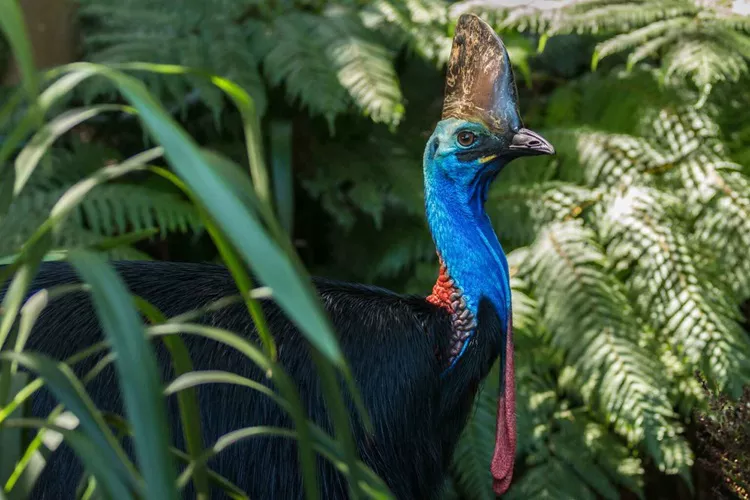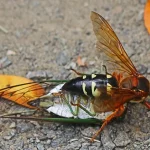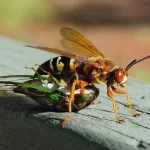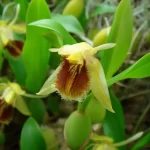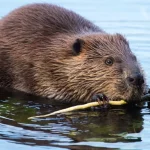Flightless birds are unique creatures that have adapted to their environments in remarkable ways. Although they lack the ability to fly, these birds possess a range of symbolic meanings across cultures. This article explores the various symbolisms associated with flightless birds, covering their spiritual meanings, cultural representations, color symbolism, interpretations in dreams, and the myths and legends that surround them.
Flightless Birds Spiritual Meaning
The spiritual meanings of flightless birds are diverse and often reflect the inherent qualities of these unique animals.
Adaptability and Resilience
Flightless birds are prime examples of adaptability. Their evolution is a testament to their ability to thrive in specific environments, often overcoming challenges associated with their inability to fly. Spiritually, they symbolize resilience and the capacity to adapt to changing circumstances. They remind us that even in the face of adversity, we can find ways to survive and flourish.
Groundedness and Connection to Earth
As creatures that dwell primarily on land, flightless birds represent groundedness and a strong connection to the Earth. This symbolism emphasizes the importance of being present and rooted in one’s surroundings. Spiritually, flightless birds encourage individuals to connect with nature and to appreciate the beauty and richness of the world around them.
Self-Discovery and Personal Growth
Flightless birds often symbolize the journey of self-discovery. Their unique adaptations reflect the idea of embracing one’s individuality and understanding personal strengths and weaknesses. Spiritually, they inspire individuals to embark on their own journeys of growth and exploration, fostering a deeper understanding of themselves and their place in the world.
Freedom Through Different Means
While flightless birds cannot soar through the sky, they find freedom in other ways, such as through their movement on land and swimming. This represents the idea that freedom can manifest in various forms, not just through flight. Spiritually, flightless birds remind us that liberation comes from embracing who we are and finding joy in our unique paths.
Family and Community Bonds
Many flightless birds exhibit strong social structures and family bonds. For example, species like the ostrich and emu are often seen in groups, emphasizing the importance of community and support. Spiritually, they symbolize the value of relationships and the strength that comes from unity and collaboration with others.
Flightless Birds Symbolism (In Different Countries)
The symbolism of flightless birds varies across cultures, often reflecting local beliefs and traditions.
In Māori Culture
In Māori culture, the kiwi bird is a national symbol of New Zealand. It represents the connection between the people and their land. The kiwi embodies qualities such as uniqueness, resilience, and tenacity. Its nocturnal habits symbolize the importance of working quietly and diligently, often unnoticed, toward achieving goals.
In Australian Aboriginal Culture
The emu is significant in Australian Aboriginal culture, often seen as a symbol of survival and resourcefulness. The emu’s ability to thrive in harsh conditions emphasizes the importance of resilience in the face of adversity. Additionally, the emu is featured in various stories and traditions, highlighting its role as a cultural icon.
In Polynesian Culture
The flightless bird known as the moa, now extinct, held significant cultural importance in Polynesian mythology. Moa were once considered sacred animals, symbolizing strength and abundance. Their absence in contemporary times represents loss and the need to honor and preserve the environment and its inhabitants.
In Western Cultures
In Western cultures, the ostrich is often associated with foolishness or avoidance, as the saying “burying your head in the sand” suggests. However, the ostrich can also symbolize strength and endurance, given its size and ability to run at high speeds. This duality reflects the complexities of life and the importance of facing challenges head-on.
Flightless Birds Symbolism (With Different Colors)
The colors of flightless birds can also carry specific meanings and symbolism, reflecting different traits and characteristics.
Black Flightless Birds
Black flightless birds, such as the cassowary, symbolize mystery, strength, and protection. The color black is often associated with the unknown, representing the deep, untamed aspects of nature. Spiritually, black flightless birds encourage individuals to embrace their inner strength and to confront their fears and challenges with courage.
Brown Flightless Birds
Brown is a common color in many flightless birds, such as the emu and kiwi. This earthy tone symbolizes stability, grounding, and connection to nature. Brown flightless birds represent the importance of staying rooted in one’s values and fostering a strong sense of belonging within the community.
White Flightless Birds
White flightless birds, like some species of albatross, symbolize purity, peace, and new beginnings. The color white is often associated with spiritual awakening and clarity. White flightless birds inspire individuals to seek inner peace and to embrace positive transformations in their lives.
Color Combinations
The combination of different colors in flightless birds can symbolize balance and harmony. For example, the colorful plumage of certain flightless birds can represent the diversity of experiences and emotions in life. This symbolism encourages individuals to embrace both the light and dark aspects of their journeys, fostering a sense of wholeness.
See Also: 39 Flightless Birds Quotes, Sayings, and Proverbs
Flightless Birds Symbolize in Dreams
Dreams involving flightless birds can carry various meanings and interpretations, often reflecting the dreamer’s emotions, relationships, and experiences.
Symbol of Groundedness
Dreaming of a flightless bird may symbolize a need for groundedness and stability. This dream could indicate that the dreamer should focus on their roots and nurture their connections to family and community. It serves as a reminder to find balance in life and to appreciate the support of loved ones.
Adaptation and Resilience
A dream featuring a flightless bird can signify the dreamer’s ability to adapt to changing circumstances. This dream may indicate that the dreamer is facing challenges and encourages them to embrace resilience in overcoming obstacles. It serves as a reminder that personal growth often comes from navigating difficult situations.
Self-Discovery Journey
Dreaming of flightless birds may represent the journey of self-discovery. This dream could indicate that the dreamer is exploring their identity and seeking to understand their strengths and weaknesses. It encourages individuals to embrace their uniqueness and to embark on their personal journeys of growth.
Family and Community Focus
A dream involving flightless birds in a social setting may symbolize the importance of family and community. This dream may suggest that the dreamer should prioritize their relationships and foster connections with others. It serves as a reminder that support and collaboration can enhance personal and collective growth.
THE Myths and Legends About Flightless Birds
Throughout history, various myths and legends have emerged surrounding flightless birds, often reflecting cultural beliefs and values.
In Māori Mythology
In Māori mythology, the kiwi is revered as a sacred bird with deep connections to the land. Legends tell of the kiwi’s unique characteristics and its role in the creation of the world. The kiwi represents the spirit of the land and is celebrated for its resilience and adaptability.
In Aboriginal Dreamtime Stories
In Aboriginal Dreamtime stories, the emu plays a vital role in creation myths. These stories often depict the emu as a resourceful creature that teaches humans about survival and harmony with nature. The emu symbolizes the connection between the land and its inhabitants, emphasizing the importance of respecting the environment.
In Polynesian Legends
The moa, now extinct, is featured in various Polynesian legends. Stories depict the moa as a powerful and sacred creature that provided sustenance to the people. The loss of the moa serves as a cautionary tale about the importance of conservation and the need to protect the environment and its inhabitants.
In Western Folklore
In Western folklore, the ostrich has been the subject of various myths and sayings. One prevalent myth suggests that ostriches bury their heads in the sand to avoid danger, symbolizing avoidance and denial. However, the ostrich also represents strength and endurance, highlighting the complexities of facing life’s challenges.
Conclusion
Flightless birds symbolize a rich array of meanings that resonate across cultures and contexts. From their spiritual significance as symbols of adaptability, groundedness, and self-discovery to their diverse representations in various cultures, these remarkable creatures embody qualities that enrich our understanding of life. Their color symbolism and interpretations in dreams further highlight the depth of their meanings. Myths and legends about flightless birds reflect their importance in history and culture, showcasing their role as symbols of resilience, community, and harmony with nature.
As we engage with the symbolism of flightless birds, we are reminded of the essential qualities they represent—adaptability, connection to earth, and the journey of self-discovery. These unique creatures inspire us to appreciate the beauty of diversity in life and to embrace the lessons they offer. Whether as symbols of personal growth or cultural significance, flightless birds hold a special place in our hearts and minds, encouraging us to find strength and purpose in our unique paths. Through understanding their symbolism, we can foster a deeper appreciation for the natural world and the rich tapestry of life it contains.
Related topics:

